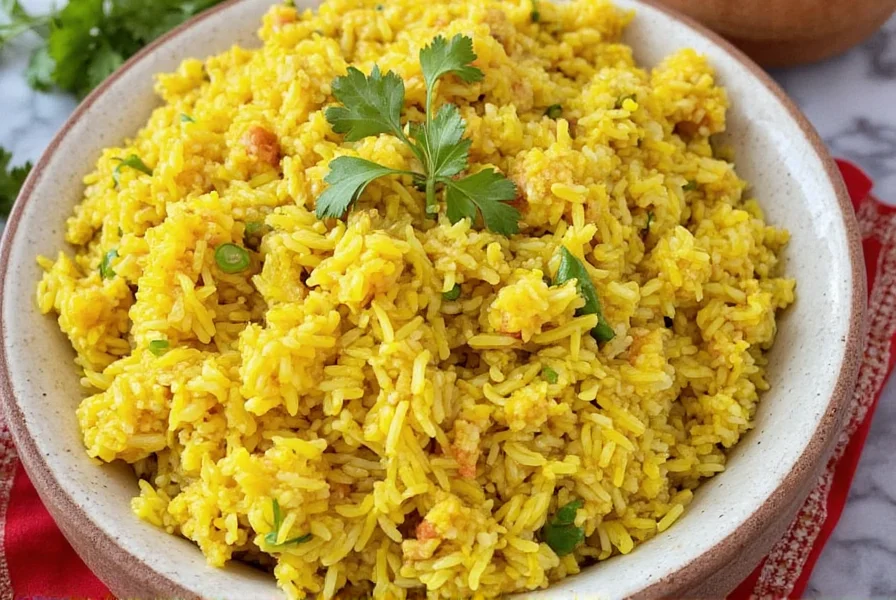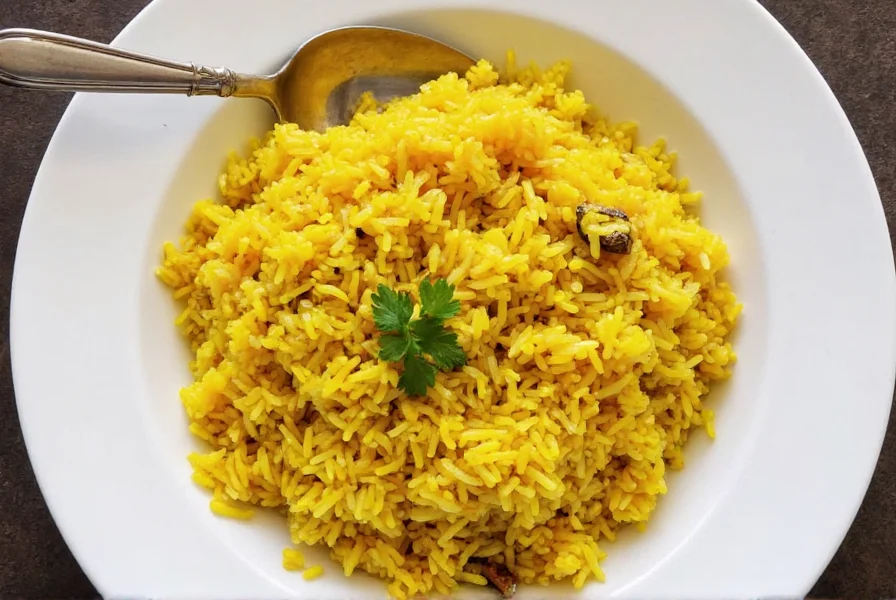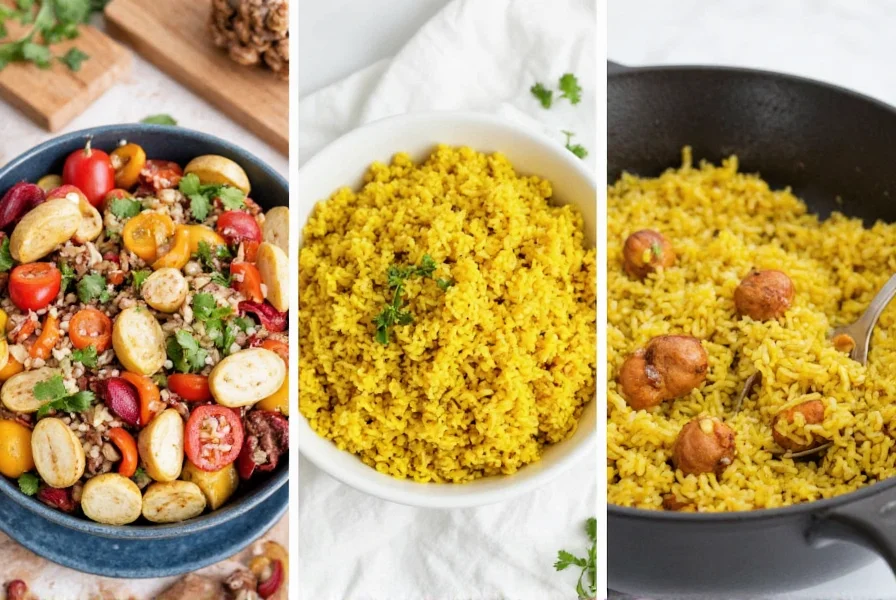
The Golden Power of Turmeric in Rice Dishes
For centuries, turmeric has been revered in Ayurvedic and Southeast Asian cooking for its vibrant color and medicinal properties. When combined with rice—the staple food for over half the world's population—it creates dishes that are both nourishing and deeply flavorful. The key compound curcumin gives turmeric its distinctive yellow hue and potent anti-inflammatory effects, which research shows may support joint health and digestion when properly prepared.
Why Rice and Turmeric Make the Perfect Pair
Rice serves as an ideal canvas for turmeric's earthy, slightly peppery flavor. The starch in rice helps distribute turmeric's fat-soluble compounds evenly throughout the dish. When cooked properly, turmeric rice becomes:
- A natural anti-inflammatory meal component
- A vibrant base for proteins and vegetables
- An easy way to incorporate medicinal spices into daily meals
- A gluten-free alternative to seasoned breads
| Rice Type | Turmeric Ratio | Best Cooking Method | Flavor Profile |
|---|---|---|---|
| Basmati | 1 tsp per cup dry | Soak 30 min, then boil | Floral, delicate |
| Jasmine | 3/4 tsp per cup dry | Steam after rinse | Sweet, fragrant |
| Brown | 1.5 tsp per cup dry | Simmer 45 min | Nutty, robust |
| White short-grain | 1 tsp per cup dry | Risotto method | Creamy, mild |
Essential Tips for Perfect Turmeric Rice
Professional chefs and home cooks agree these techniques transform basic turmeric rice into exceptional dishes:
- Activate curcumin - Always combine turmeric with black pepper (contains piperine) and healthy fat like coconut oil to increase absorption by 2000%
- Prevent staining - Use glass or stainless steel pots; turmeric can permanently discolor aluminum
- Control bitterness - Never add turmeric to cold water; always bloom in hot oil first
- Preserve color - Avoid overcooking; turmeric breaks down after 20 minutes of boiling
Five Exceptional Rice and Turmeric Recipes
Classic Golden Turmeric Rice
This foundational recipe serves as the perfect base for any meal. The secret lies in toasting the rice before adding liquid.
Turmeric Coconut Rice with Mango
Tropical flavors meet anti-inflammatory benefits in this Southeast Asian-inspired dish. Full-fat coconut milk creates a creamy texture while balancing turmeric's earthiness with natural sweetness from ripe mango.
Medicinal Turmeric Congee
For digestive health, this Chinese-inspired rice porridge simmers for hours to extract maximum benefits from turmeric. Add ginger and garlic for enhanced immune support during cold season.
Protein-Packed Turmeric Quinoa Rice Blend
For those seeking higher protein, this 50/50 blend of quinoa and rice delivers complete amino acids while maintaining familiar texture. Rinse quinoa thoroughly to remove bitterness before combining.
One-Pan Turmeric Chicken and Rice
This complete meal combines marinated chicken thighs with turmeric rice and seasonal vegetables. The chicken drippings infuse the rice with additional flavor while keeping preparation simple.
Avoiding Common Turmeric Rice Mistakes
Even experienced cooks make these errors that compromise flavor and nutritional value:
- Adding turmeric to cold water - Causes clumping and uneven distribution
- Overcooking - Degrades curcumin content and creates mushy texture
- Skipping fat pairing - Limits curcumin absorption by 90%
- Using expired turmeric - Loses 50% potency after 6 months in pantry
Storing and Reheating for Maximum Benefits
To preserve both flavor and nutritional value:
- Cool completely before refrigerating in airtight containers
- Add a splash of water when reheating to reactivate flavors
- Store no longer than 4 days for optimal curcumin content
- Freeze in portion-sized containers for up to 3 months

Creating Your Own Turmeric Rice Variations
Once you master the basic technique, experiment with these flavor combinations:
- Middle Eastern: Add cumin, cinnamon, and toasted almonds
- Mediterranean: Mix with lemon zest, olives, and fresh herbs
- Caribbean: Incorporate allspice, scotch bonnet pepper, and thyme
- Indian: Layer with cardamom, cloves, and bay leaves
Frequently Asked Questions
Does cooking turmeric reduce its health benefits?
When cooked properly with fat and black pepper, turmeric's curcumin becomes more bioavailable. Avoid boiling for more than 15-20 minutes to preserve maximum benefits.
How can I prevent turmeric from staining my pots and hands?
Use stainless steel or glass cookware instead of aluminum. Wear gloves when handling fresh turmeric, and clean surfaces immediately with soapy water. Lemon juice helps remove stains from skin.
What's the best way to store turmeric for rice recipes?
Keep ground turmeric in an airtight container away from light and heat. Properly stored, it maintains potency for 6-12 months. For maximum freshness, buy whole turmeric root and grate as needed.
Can I make turmeric rice without oil for a low-fat diet?
While possible, oil significantly increases curcumin absorption. For lower fat content, use just 1 teaspoon of healthy oil like avocado or coconut oil per cup of dry rice to activate turmeric's benefits without excessive fat.
Why does my turmeric rice taste bitter sometimes?
Bitterness usually comes from adding turmeric directly to cold water or overcooking. Always bloom turmeric in hot oil first, and avoid cooking beyond 20 minutes to prevent bitterness while maximizing flavor absorption.











 浙公网安备
33010002000092号
浙公网安备
33010002000092号 浙B2-20120091-4
浙B2-20120091-4